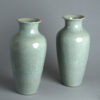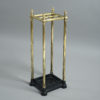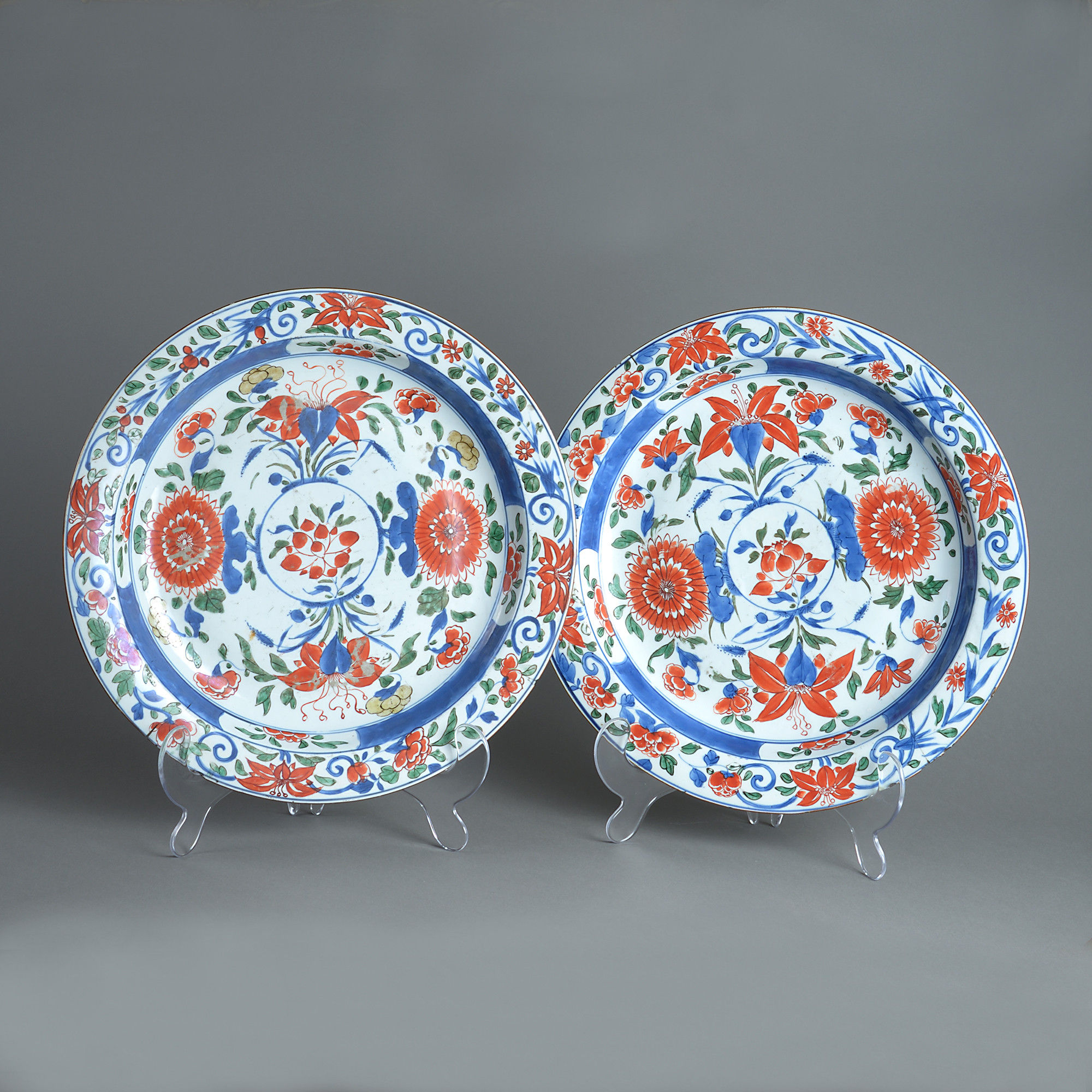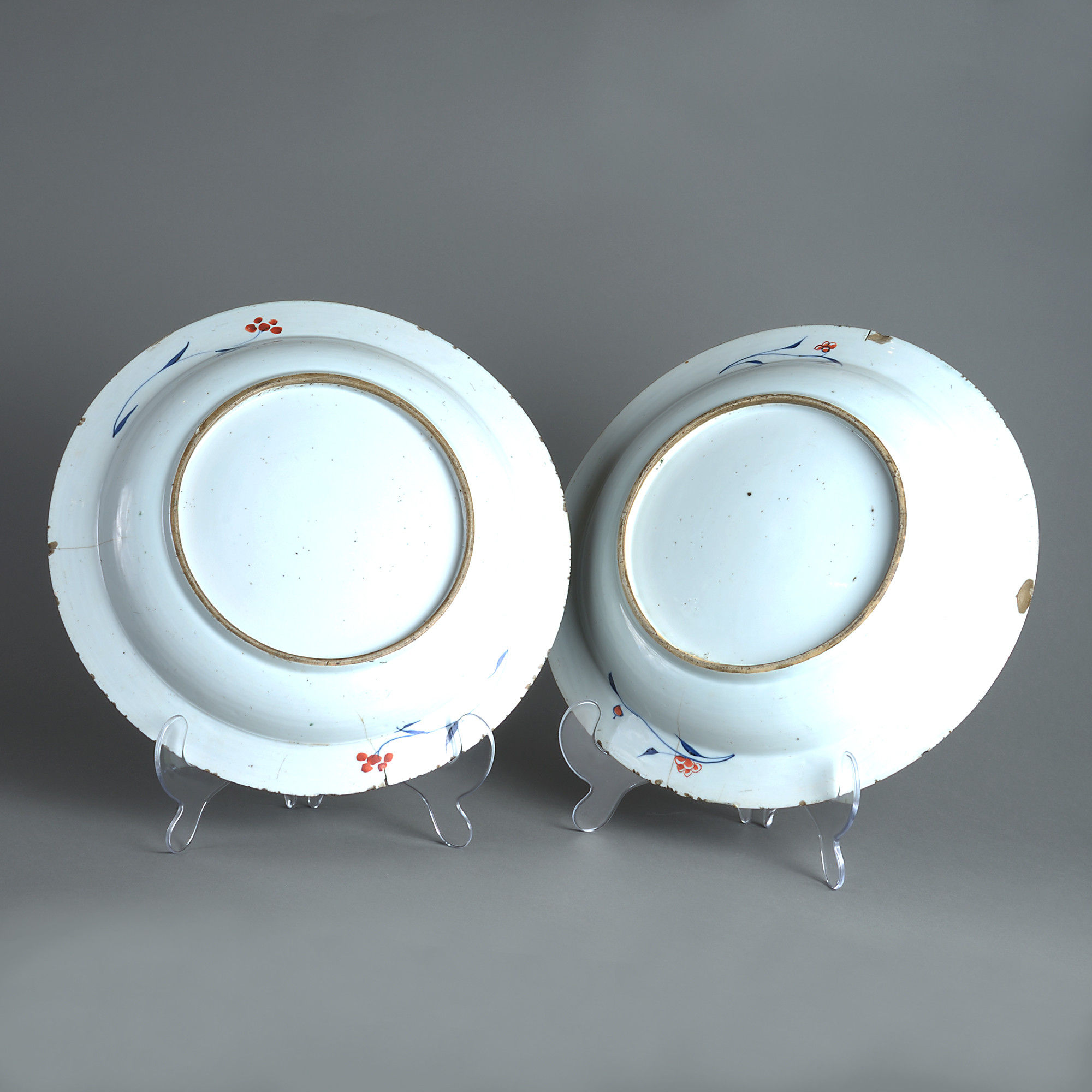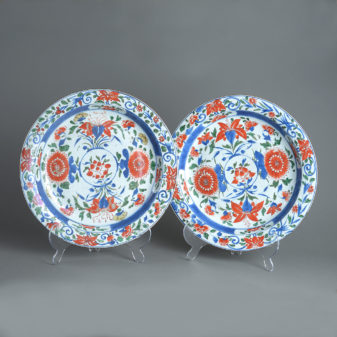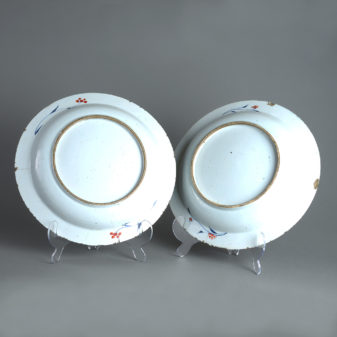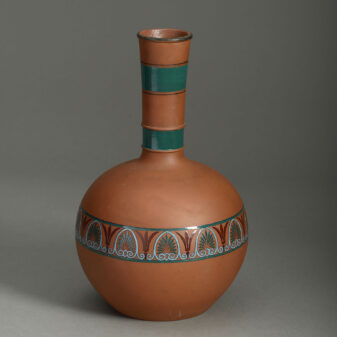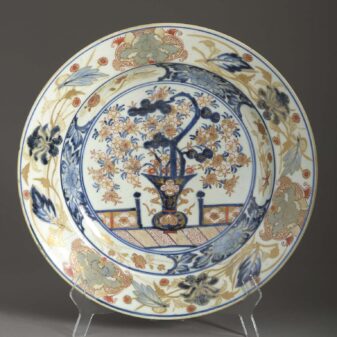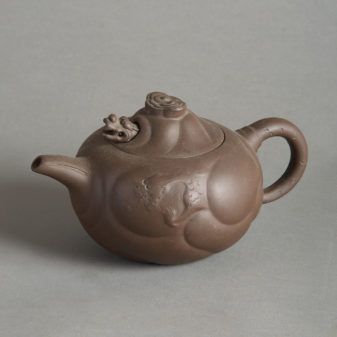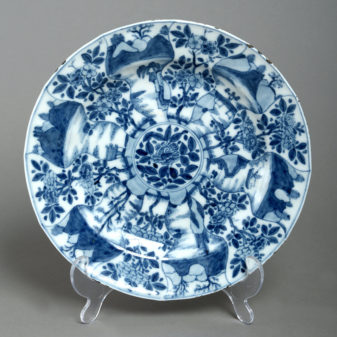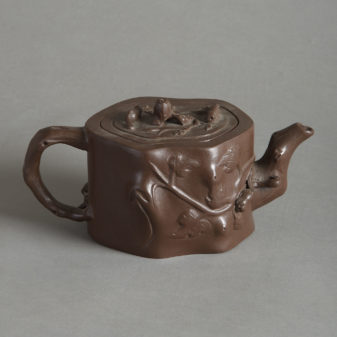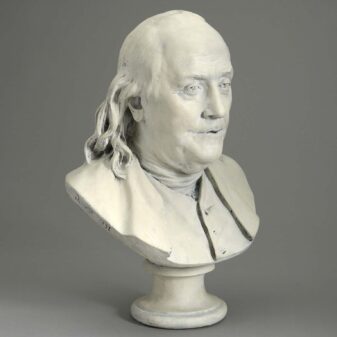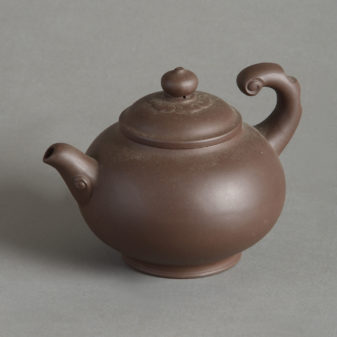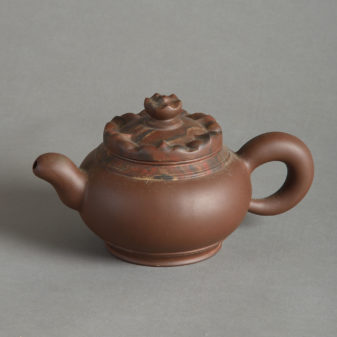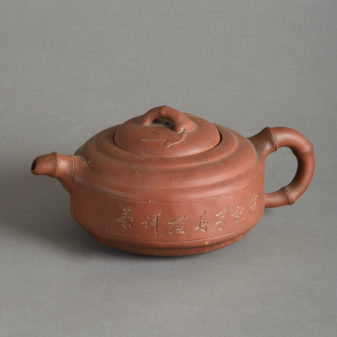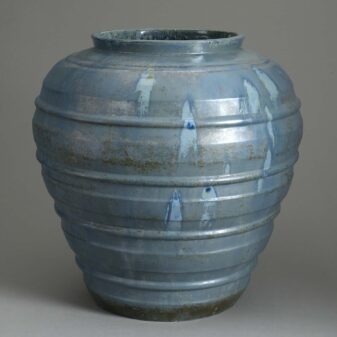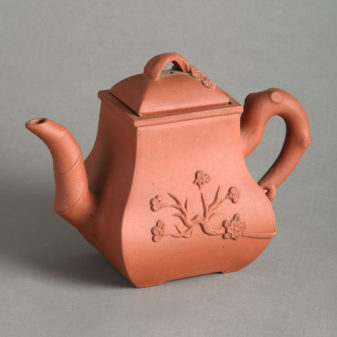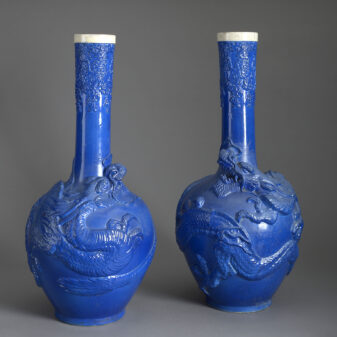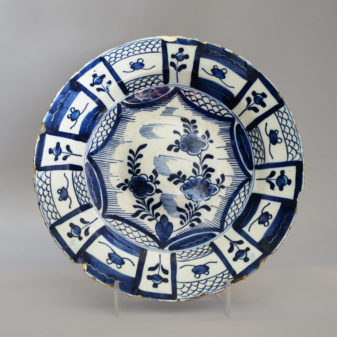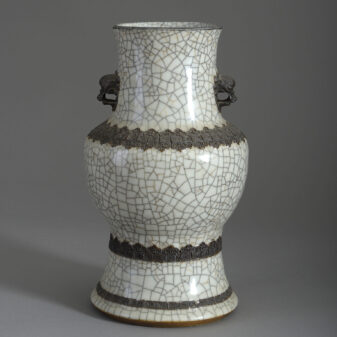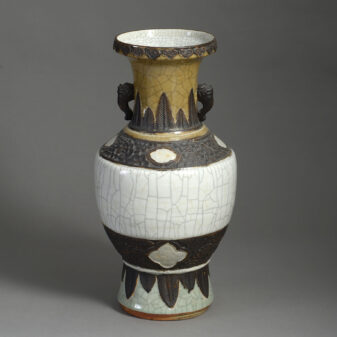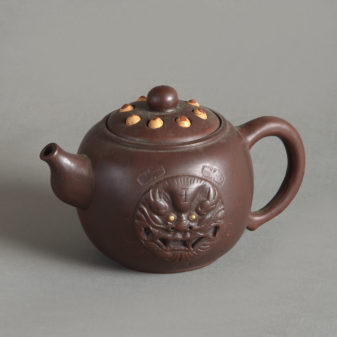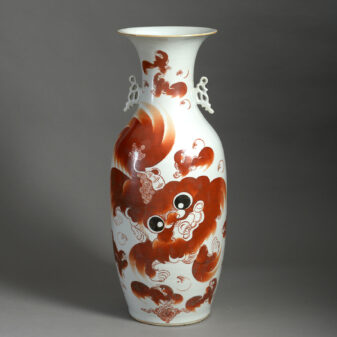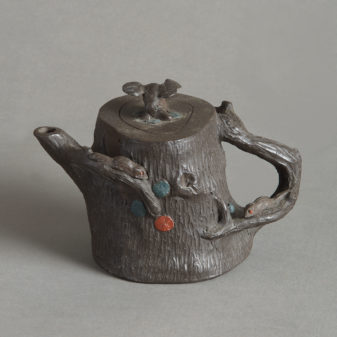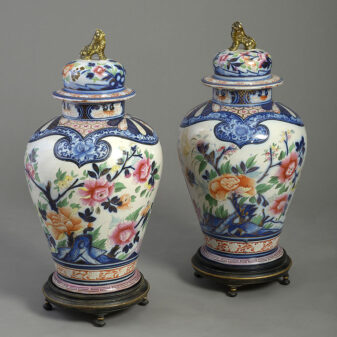A Pair of Early 18th Century ‘Imari Kangxi’ Chargers
£1,950
SOLD
A pair of early 18th century porcelain chargers, decorated with stylised flowers and foliage in polychrome glazes upon a white ground in imitation of Japanese Imari.
Condition: commensurate with age (minor hairlines and fritting to underside)
Towards the end of the 17th century, the Emperor Kangxi initiated a renaissance of porcelain production at the Jingdezhen porcelain factories following on from the decline of porcelain exports which was due to the collapse of the Ming Dynasty. Large scale production, on an unprecedented scale commenced, drawing upon earlier styles, such as the five colour decoration – ‘Wucai’ – as well as the comparatively similar contemporary Imari porcelain that was produced in Japan.
Chinese Imari, although close to Japanese Imari, often utilised Chinese symbols or stylised motifs rather than directly copying original Japanese pieces. The Chinese Imari finish was also considered finer with a more even glaze and a greater translucence of colours. These qualities, combined with lower production costs, resulted in Chinese Imari superseding Japan’s Imari exports in the eighteenth century.
These particular chargers are an excellent example of the more translucent glazes being produced by the Chinese with a richer cobalt blue and typically Chinese flowers, not at all like the Japanese floral decoration of original Imari. The influence of Wucai is also evident here with the five colours: red, blue, white, green and yellow.

